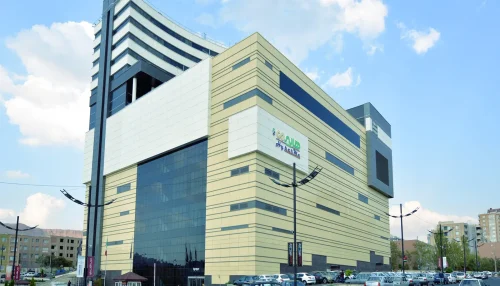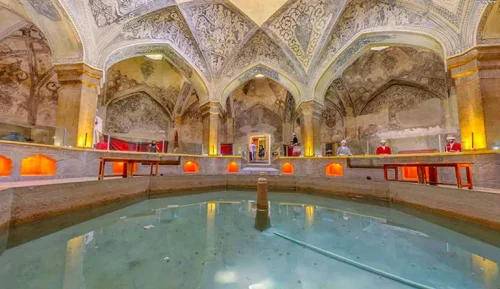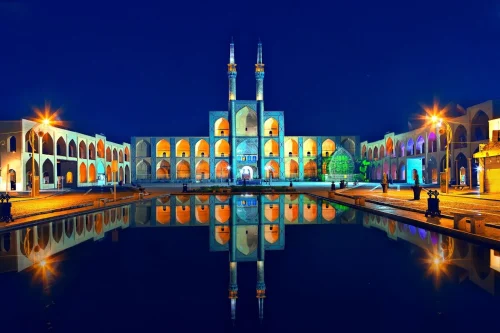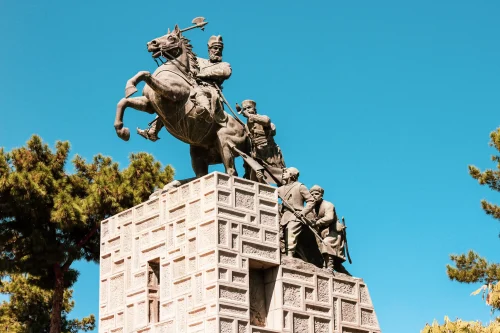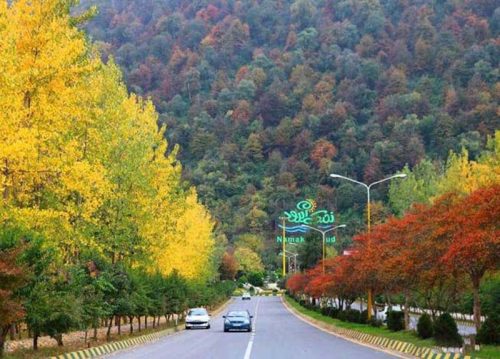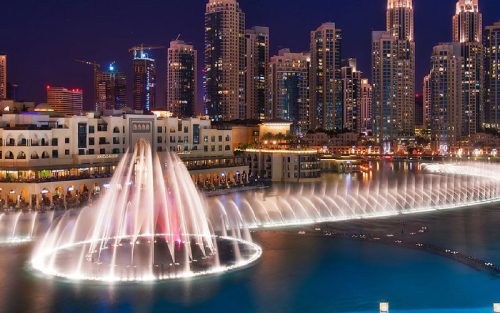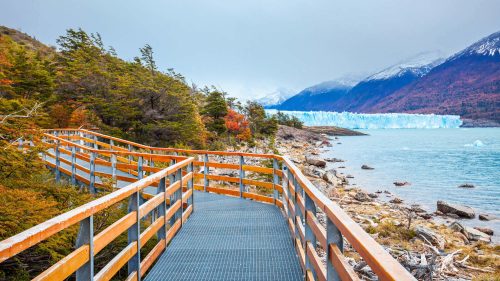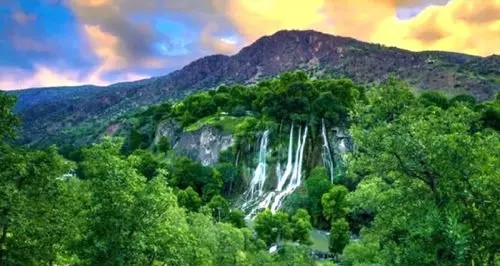A Trip to Hara Forest of Qeshm: Discover the Land of Floating Trees on Water
Qeshm’s Hara Forest: The Ecological Heart of the Persian Gulf
Located in the Persian Gulf, Qeshm’s Hara Forest is one of Iran’s most significant ecosystems. With extensive mangrove trees, it plays a vital role in maintaining the region’s ecological balance and attracts both domestic and international tourists with its unique natural beauty. The mangrove’s aerial roots, known as “breathing roots,” are well adapted to the humid conditions and saltwater of the Gulf. These forests help reduce soil erosion, preserve the coastline, and provide habitats for various species.
Ecological Importance of Qeshm’s Hara Forest
Recognized as a crucial environmental resource, Qeshm’s Hara Forest performs multiple roles in the local ecosystem. By absorbing atmospheric carbon, it mitigates the effects of climate change. Acting as a natural filter, it enhances the quality of the Gulf’s saline waters. The presence of diverse plant and animal species underscores its exceptional importance for preserving biodiversity.
Differences Between Qeshm Hara Forest and Other Hara Areas
Qeshm Hara Forest stands out from other Hara regions in Iran in terms of biodiversity and area. Covering about 7,000 hectares, it is the largest mangrove forest in the Middle East and hosts a higher variety of plant and animal species. Compared to lesser biodiversity and extent in Hormuz and Chabahar’s mangrove forests, Qeshm offers greater recreational and comfort facilities, making it a desirable tourist destination.
Attractions in Qeshm Hara Forest
With its unparalleled natural attractions, Qeshm’s Hara Forest ranks among Iran’s most popular tourist destinations. Visitors can enjoy views of aerial-rooted mangrove trees, saltwater lagoons, and small lakes, offering peaceful and scenic vistas. Walking paths through the forest allow birdwatching opportunities and exploring diverse marine life. Boating through the Hara Forest’s saline waters is also a favored activity for tourists, providing a unique and delightful experience.
Best Time to Visit Qeshm Hara Forest
The optimal time to visit Qeshm Hara Forest depends on your purpose. Fall and winter, with cooler and less humid weather, provide the best conditions for enjoying the forest’s natural scenery. During these seasons, the Gulf’s saline waters are calmer, allowing for better viewing of the mangrove’s aerial roots. Additionally, early mornings offer the best opportunity for birdwatching and seeing migratory bird activities in the Hara Forest.
Recreational Activities in Qeshm Hara Forest
Offering various recreational activities, Qeshm Hara Forest ensures tourists a unique experience. Boating amidst the mangrove trees, nature photography, birdwatching, and specialized walking trails are among these activities. Guided tours and comprehensive information about the forest’s flora and fauna familiarize visitors with its ecological values. Nearby restaurants and accommodations contribute to the forest’s allure as a tourist destination.
Assessment and Conservation of Qeshm Hara Forest
Protecting the sensitive and valuable ecosystem of Qeshm Hara Forest is crucial. The Iranian Environmental Protection Agency has established protected zones and sustainable management programs to maintain these forests. Community education and awareness regarding the forest’s ecological balance are also pivotal for its preservation. Collaborative efforts from managers and environmental activists ensure these precious forests endure for future generations.
Access to Qeshm Hara Forest
Access to Qeshm’s Hara Forest is convenient via various routes. From Qeshm city, designated and outsourced paths lead to different areas of the Hara Forest. Travel usually involves personal vehicle or taxi, but local tour services offer unique travel experiences. Proximity to local harbors provides visitors with boating and seafaring options to the forest.
Role of Qeshm Hara Forest in the Local Economy
Beyond its environmental significance, Qeshm Hara Forest plays a vital role in the local economy. Sustainable tourism as a major income source offers job creation for residents and supports related businesses, fostering economic development. Additionally, conserving the Hara ecosystem enhances residents’ quality of life and increases land and surrounding area value. Therefore, investing in preserving Qeshm Hara Forest yields long-term benefits for the local community.
Tourist Experiences in Qeshm Hara Forest
Positive tourist experiences in Qeshm Hara Forest highlight the allure and value of this destination. Visitors worldwide relish the forest’s natural beauty, tranquility, and biodiversity. Opportunities for photography, birdwatching, and engaging in activities like boating create unforgettable memories. Positive reviews and valuable experiences inspire further development and conservation of this unique ecological area.
FAQ
- What is Hara Forest?
- Hara Forest is a type of coastal wetland that grows in the tidal zones of the Persian Gulf. These forests, made up of mangrove trees with aerial roots, are key and unique ecosystems.
- What distinguishes Hara Forest from other forests?
- The Hara forests are located at the conjunction of land, ocean, and atmosphere, featuring mangrove trees with aerial roots that can withstand saline waters, making them unique ecosystems.
- How far is Hara Forest from Qeshm?
- The distance from the center of Qeshm city to the Hara Forest of Soheil is about 71 kilometers, taking approximately an hour by car.
- What are the attractions of Qeshm’s Hara Forest?
- Attractions include viewing mangrove trees’ aerial roots, boating through the forest, birdwatching, and photography of beautiful wetland landscapes.
- When is the best time to visit Qeshm’s Hara Forest?
- Fall and winter, with cooler and more favorable weather, are the best times to visit Qeshm’s Hara Forest. It also depends on your visit’s purpose, such as observing tides.
- What differentiates Qeshm’s Hara Forest from those in Hormuz and Chabahar?
- Qeshm’s Hara Forest is the largest in Iran with high biodiversity and more amenities, while Hormuz and Chabahar’s forests have lesser extent and biodiversity.
- How can one reach Qeshm’s Hara Forest?
- You can reach Qeshm by domestic flight and then travel to Soheil’s Hara Forest by car or taxi. Joining tourist tours is also an option.
- What activities can be done in Qeshm’s Hara Forest?
- Activities such as boating, photography, birdwatching, hiking, and learning about the mangrove ecosystem are popular in Qeshm’s Hara Forest.
- What animals and birds are found in Qeshm’s Hara Forest?
- This forest safely harbors diverse marine life, migratory birds like storks and herons, and marine life such as fish and crabs.
- Is Qeshm’s Hara Forest safe for visitors?
- Yes, Qeshm’s Hara Forest is known as a safe tourist destination with suitable amenities and adherence to safety principles. The presence of experienced guides ensures visitor safety.
- What facilities are available in Qeshm’s Hara Forest?
- Facilities include restaurants, eco-lodges, boat rides, tourist tours, and visitor information centers.
- Do you need a permit to enter Qeshm’s Hara Forest?
- Entering Qeshm’s Hara Forest is possible for all visitors without a specific permit, although temporary permits may be needed for certain activities like boating.
- How can you book accommodation near Qeshm’s Hara Forest?
- You can book through travel websites or directly contact eco-friendly accommodations near Qeshm’s Hara Forest.
- What is the environmental impact of Qeshm’s Hara Forest?
- Qeshm’s Hara Forest maintains ecosystem balance, prevents soil erosion, absorbs carbon, and provides a safe habitat for various plant and animal species, playing a vital role in environmental conservation.
- Are guided tours available in Qeshm’s Hara Forest?
- Yes, guided tours are offered by environmental and tourism experts to provide visitors with a detailed understanding of the forest’s ecosystem and attractions.
- What should you prepare for a trip to Qeshm’s Hara Forest?
- It is recommended to bring suitable walking clothes, a hat, sunscreen, sunglasses, a camera, and water. You may also need appropriate footwear for wet paths.
- How can you photograph Qeshm’s Hara Forest?
- By selecting optimal times like sunrise or sunset, using a quality camera, and respecting the environment and wildlife, you can take beautiful photos of Qeshm’s Hara Forest.
- What is the best way to experience boating in Qeshm’s Hara Forest?
- You can rent local boats or join boating tours with expert guides to explore the beauty of Qeshm’s Hara Forest.
- What tree species are found in Qeshm’s Hara Forest?
- Qeshm’s Hara Forest hosts various mangrove species like Avicennia marina, Rhizophora mucronata, and Sonneratia alba, each with distinct characteristics.
- What conservation missions does Qeshm’s Hara Forest have?
- Qeshm’s Hara Forest is tasked with maintaining ecosystem balance, preventing soil erosion, absorbing atmospheric carbon, and providing a safe habitat for various plant and animal species.

